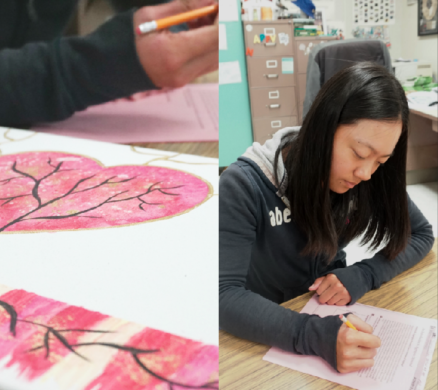
By Karen Phan, Staff Writer
Traditionally, we’ve been given material to memorize and then assessed for knowledge or mastery of the content. However, the U.S. school system has recognized that memorizing content and reiterating it verbatim on paper does not equate to understanding the material, and has frequently been modifying education standards to help students think more in depth. It has been deviating from old-fashioned principles in its pursuits to better prepare students for the real world.
The importance of understanding something ties in with the ability to apply knowledge to the real world. All of us have probably questioned the content that we were given at least once thinking, “when will we ever use this in our everyday lives?” Sometimes, we’re right. You’ll rarely ever see statistics displayed with a box-and-whisker plot. Despite the lack of usage of box-and-whisker graphs in everyday scenarios, if we are fully able to understand the concepts that correlate with this type of data display, then we will be capable of sorting data to some extent. This leads me to inquire whether the infamous tests and projects students dread do a better job of helping and proving if they understand the content they were taught.
For the most part, projects encourage students to take their learning into their own hands as they require an extensive amount of outside research. Projects are generally self-directed, allowing students to be as creative as they want. There are many different types of projects that students can turn to, such as video projects, models, presentations, trifolds and so forth. The freedom students have when it comes to projects tends to make the assignment less stressful and more fun, unless they procrastinate. Tests often fail to excite students due to the sheer amount of pressure they face, as the name itself is stressful to most.
Projects also enhance a student’s learning experience because students have to apply the knowledge they have and demonstrate it in a way that proves they understand the concepts that were taught. The downside of projects is that they do not present a broad amount of information as tests require. Most students will focus on one aspect of the assignment, whereas tests are better at assessing both general and specific knowledge. Furthermore, it is not guaranteed the students actually know what they are talking about, or if the work is theirs.
On the other hand, tests often focus on just the content that was taught in class, so students know what to look for. Teachers may favor exams over projects when it comes to assessing knowledge, because they are private and show what an individual student knows. Tests are more suited for reflecting students’ knowledge, but they can be stressful. Tests may be quicker to execute than projects, however, lots of information are crammed into study sessions in order to ensure that one is prepared for the exam. They can be worth many points or a huge portion of a student’s grade, so a poor test score can terrify and demoralize a student. Some students are poor test takers, and despite their knowledge of the subject, they may perform poorly and their grade suffers the consequences. For most, a test is nothing more than trying to memorize textbook information and forgetting it the day after. Tests don’t necessarily accurately reflect the students’ knowledge of the subject, since every student has different capabilities and judging what they know through identical tests is unfair.
“[Understanding] starts off with memorization, but students should further it. I want to know how the information relates to real life,” said Julie Chaicharee, a teacher in the social studies department.
Mindfulness comes into play with today’s learning expectations. We don’t grasp concepts if we aren’t paying attention. Many students have trouble paying attention in class, including myself, when the content is not taught in an exciting way. It goes in one ear and out the other, and the next thing you know, a test has been scheduled or a project has been assigned. Tests do their fair share of making sure students are memorizing the content, but they often fail to expand that knowledge into something applicable to real life. On the contrary, projects bring out creativity and self-directed learning, yet fail to thoroughly touch all content. This goes to show that we’ve got our own individual capabilities that can’t all be nurtured in a classroom setting.
Ultimately, the result of a good learning experience is a blend of knowing the content and also being able to explain it. What’s even better is interpreting it well enough to apply the retained knowledge to real-life scenarios. The content that is taught in class becomes more meaningful when students grasp the bigger picture and the importance of the skills. The goal for educators should be to foster learning in a way that promotes critical thinking in students, and finding the best method to evaluate that. In the end, it comes down to which means of approach educators plan to take and how students respond to such methods.





